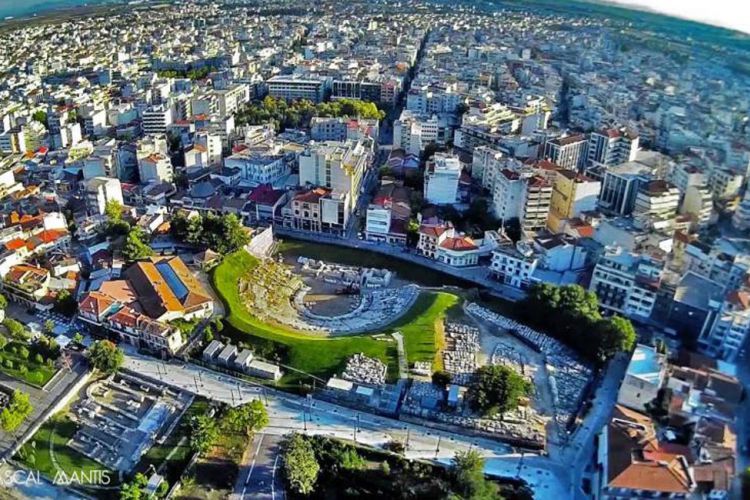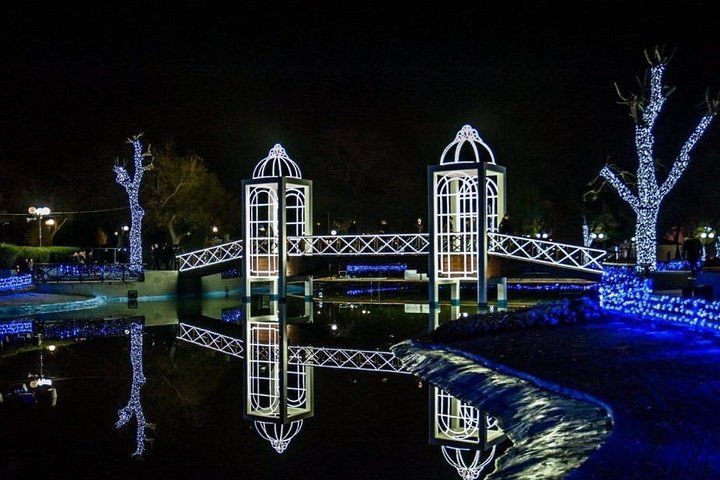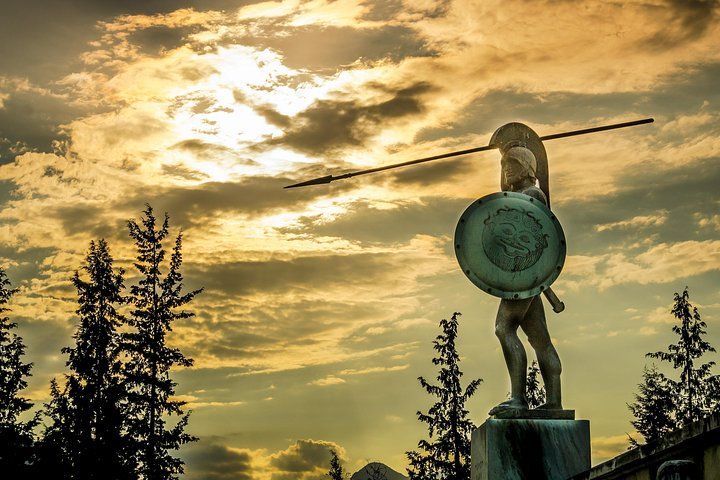Larissa
Thessaly, Central Greece
Why choosing Larissa?
Larissa is the capital and largest city of Thessaly region of Greece and capital of the Larissa regional unit. It is a principal agricultural centre and a national transportation hub, linked by road and rail with the port of Volos, the city of Thessaloniki and Athens. The urban area of the city, although mostly contained within the Larissa municipality and several other suburban settlements, bringing the wider urban area population of the city to about 220,000 inhabitants. Today, Larissa is a major commercial and industrial centre in Greece.
Larisa is a modern city with a long history with beautiful squares, neighborhoods and parks, along with numerous commercial shops and many options as far as food and entertainment are concerned. It is said that the city has more than 1600 cafes (!) and is sometimes called as "the city of coffee". But except for relaxing and drinking coffee, you should spend some time on sightseeing.
History
Traces of Paleolithic human settlement have been recovered from the area, but it was peripheral to areas of advanced culture. The area around Larissa was extremely fruitful; it was agriculturally important and in antiquity was known for its horses
The name Larissa (Λάρισα Lárīsa) is in origin a Pelasgian (pre-Greek) word for "fortress". There were many ancient Greek cities with this name. The name of Thessalian Larissa is first recorded in connection with the aristocratic Aleuadai family.
Larissa is thought to be where the famous Greek physician Hippocrates and the famous philosopher Gorgias of Leontini died.
When Larissa ceased minting the federal coins it shared with other Thessalian towns and adopted its own coinage in the late 5th century BC, it chose local types for its coins. The obverse depicted the nymph of the local spring, Larissa, for whom the town was named; probably the choice was inspired by the famous coins of Kimon depicting the Syracusan nymph Arethusa. The reverse depicted a horse in various poses. The horse was an appropriate symbol of Thessaly, a land of plains, which was well known for its horses.
Top things to do and see in and around Larissa
(Saint Achilles, the patron saint of the city), a location which has been continuously inhabited since the Neolithic period. During the Classical period it constituted the citadel of Larissa. A fortress was also built here by the Byzantines during the early years of their empire. Today, only the 15th century Turkish market survives, constructed with the remains of older structures. On the southern slope of the hill, we can visit the ruins of the ancient theatre. In close proximity to this theatre, was recently discovered a smaller one, which is also of great archaeological importance.
The magnificent First Ancient Theatre of Larissa was constructed in the first half of the 3rd century BC in the southern foothills of the hill "Fortress", where the ancient city's fortified Acropolis stood. It was not more until the end of the 3rd century or early in the 4th century AD that it existed. An earthquake in the late 2nd century or early in the 3rd century AD destroyed the second floor of the scene, the Doric entablature and a part of the transcendent epitheatre. Almost its total destruction was induced by a second strong earthquake that occurred in 7th century AD.
The Diachronic Museum of Larissa is built on the city's southern outskirts, in an area of 54 acres. The exhibits come from excavations carried out during the 20th century and in its entirety will host about 2000 objects.
The river flows through the city of Larissa and through the Thessalian plain. Reaching the Aegean Sea, it creates a large delta, well known for its beauty and for many animal species, protected by international environmental treaties. Its total length is 205 km. There are plenty of walking trails along the river both in the city and outside it.
The Mill of Pappas is cultural heritage museum and a living part of our city's history. The mill was a watermill, windmill, roller in successive phases of its development since its foundation in the late 19th century until the 1980s that stopped its activity. Today, after the restoration of the mill, many cultural activities are held. In the mill and around it are housed and operated a dance school, art workshops , a small theater with 150 people capacity , the Municipal Band , a summer cinema , a puppetry.
Larissa is a very youthful and lively city, with many cafés, restaurants and taverns, situated by the most part in the pedestrian area of the city's centre which also thrives commercially, full of shops and boutiques in walking distance from many of the city's historical monuments.
The Museum's collections currently number to a total of over 20,000 objects dating from the 15th to the mid 20th century. The collections include items tied to traditional and urban life, agricultural farming and livestock, pottery, secular and ecclesiastical silversmithing, copper art, weaving, costumes, stamped artifacts, embroidery, wood carvings, prints and artworks and a rich historical and photographic archive.
The coastline of beaches Larissa reaches 50 kilometers and there are over 20 beautiful beaches and small coves in shadow of Maurovounio, Kissavos and Olympus. Many of the beaches are organized with tourist facilities, others less or not at all-let in the hands of Mother Nature. All of them have golden color with either little pebbles or white sand for all tastes.
To the south of legendary Mt. Olympus lies its "brother" or "rival" from ancient times, Mt. Kissavos. A mountain full of dense forests of chestnut, beech and pine trees, canyons, streams and beautiful waterfalls, overlooking the Aegean Sea. The mountain is full of scenic small villages scattered around. The gorge of Kalypso, with a waterfall rushing down from 70 meters high takes your breath away! At its base the water accumulates into a large lagoon, where you can swim and enjoy the refreshing mountain water!
See more here https://www.visitgreece.gr/mainland/thessaly/larisa/
Arrivals
Arrival airports
Participants are expected to arrive through the Athens International Airport Eleftherios Venizelos, or Thessaloniki International Airport Makedonia, or Nea Anchialos National Airport.




